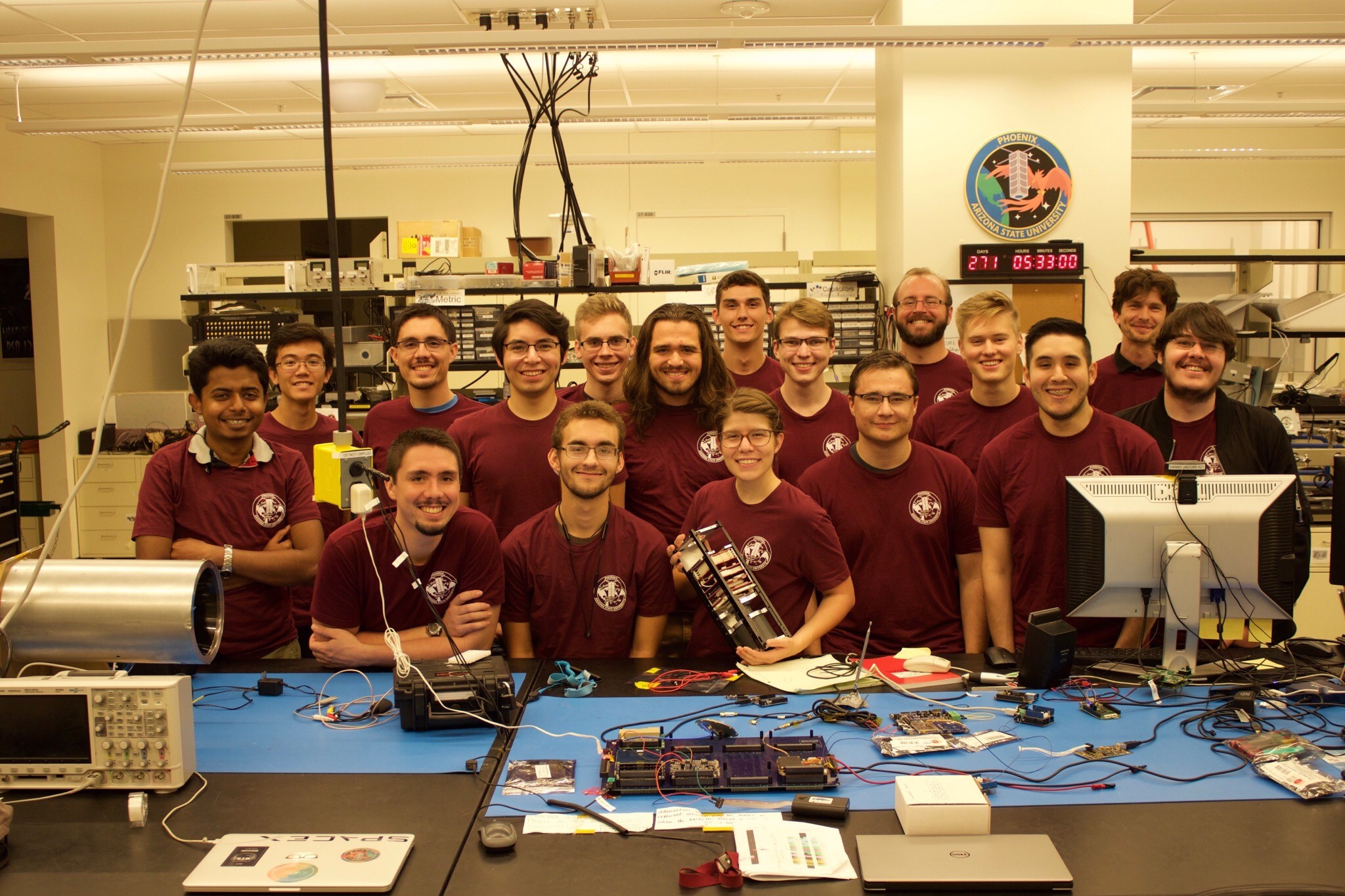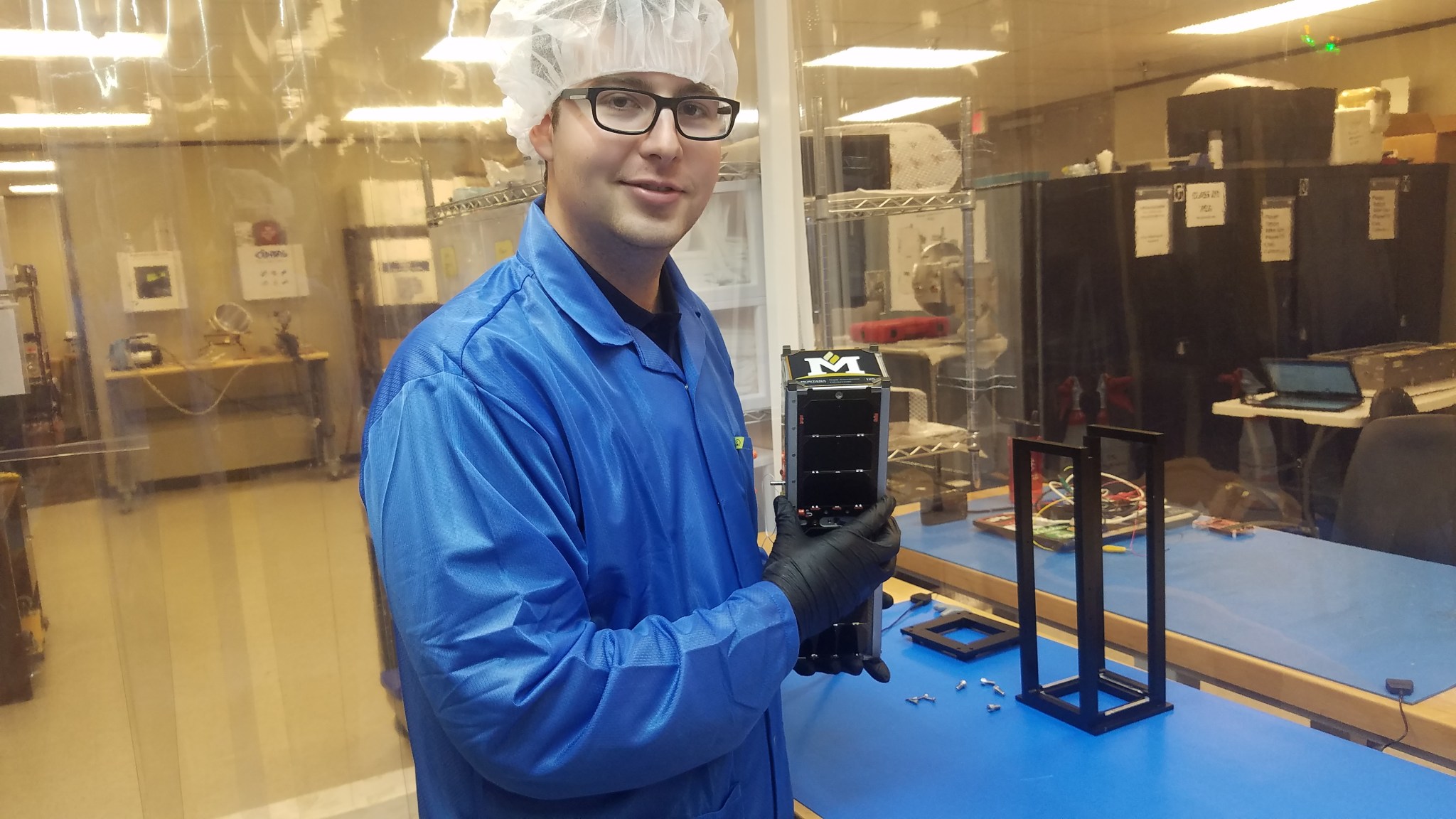On Saturday, seven small research satellites, or CubeSats, developed by students from eight universities across the nation will fly on Northrop Grumman’s Antares rocket from NASA’s Wallops Flight Facility in Wallops, Virginia, targeting a launch at 9:59 a.m. EDT.
All seven CubeSats were selected through NASA’s CubeSat Launch Initiative (CSLI) and are a part of the 25th Educational Launch of Nanosatellites (ELaNa) mission. CSLI enables the launch of CubeSat projects designed, built and operated by students, teachers and faculty, as well as NASA Centers and nonprofit organizations. ELaNa missions provide launch and deployment opportunities and ride-shares to space for CubeSats selected through CSLI. Students are heavily involved in all aspects of the mission from developing, assembling, and testing payloads to working with NASA and the launch vehicle integration teams. The ELaNa CubeSats are held to rigorous standards similar to those adhered to by the primary spacecraft.
Five of the CubeSats were developed through NASA’s Undergraduate Student Instrument Project or USIP.
“Through USIP, NASA offers real-world experiences, with the goal of developing students’ competencies in science, technology, engineering and math (STEM), skills critical to building a STEM-literate workforce and achieving the nation’s exploration goals,” said Joyce Winterton, Wallops senior advisor for education and leadership development.
In 2016, NASA’s Science Mission Directorate and the Office of Education’s National Space Grant Program awarded $8 million through the USIP to 47 student teams from 33 states to conduct hands-on research with 23 of the projects being CubeSats.
The USIP student teams proposed science or technology experiments that are relevant to NASA missions, and the platform to fly their payload. The platforms include sounding rockets, scientific and hand-held balloons, aircraft, suborbital reusable and commercial launch vehicles, and CubeSats launched as a secondary payload on an orbital vehicle.
Students from all eight universities will be on site to view the launch and witness their CubeSats embark on the journey to the International Space Station where they will be deployed in early 2020.
The 5 USIP CubeSats flying on Antares are:
- RadSat-u
Montana State University – Bozeman
RadSat-u is a technology demonstration mission of a radiation tolerant computer system that is resilient to faults caused by ionizing radiation. The computer technology employs a novel fault-mitigation strategy that uses redundant processing cores and real-time reconfiguration of the hardware to quickly recover from radiation-induced failures. The mission will test the addition of an error correction and synchronization strategy for the data memory of the computer. This mission will also verify that both the processor and memory system can operate reliably in the presence of ionizing radiation. RadSat-u is funded by the NASA Established Program to Stimulate Competitive Research and University Student Instrument Project.
- Phoenix
Arizona State University – Tempe
Phoenix is a technology demonstration mission to determine the effectiveness of nanosat platforms to conduct scientific investigations of urban environments. The Urban Heat Island Effect is a phenomenon in which the structure of the city causes a rise in surface temperature. It will use a thermal-IR imaging payload to study spatial and temporal changes in the heat properties of Phoenix, Arizona, as well as other U.S. cities. The imager is an off-the-shelf FLIR Tau 2 longwave infrared thermal camera. Phoenix is funded by the NASA University Student Instrument Project.
- SOCRATES
Signal of Opportunity CubeSat Ranging and Timing ExperimentS
University of Minnesota – Minneapolis
SOCRATES is a technology demonstration mission to look at gamma ray photons from deep space. The Gamma Ray Incidence Detector (GRID) sensor being developed is a gamma-ray (and hard X-ray) detector optimized for making accurate positioning, navigation and timing (PNT) measurements. In operation, it will use signals of opportunity (e.g., naturally occurring gamma-ray emissions for sources such as Gamma-Ray Bursts or GRBs) as navigation and timing beacons akin to GPS satellites. It will advance the technology readiness level (TRL) of the sensor from 5 to 7. SOCRATES is funded by the NASA University Student Instrument Project.
- HuskySat-1
University of Washington – Seattle
HuskySat-1 is a technology demonstration mission to test a pulsed plasma electric propulsion system and a high-frequency K-band communication system. It will fly a newly developed Amateur Radio Linear Transceiver and a purchased UHF/VHF antenna system, but is otherwise an entirely student-designed and built 3U CubeSat, including a camera board developed by local Raisbeck Aviation High School. The project fosters interdisciplinary student participation in space systems research to inspire and train future space scientists. HuskySat-1 is funded by the NASA University Student Instrument Project.
- SwampSat II
University of Florida – Gainesville
SwampSat II is a technology demonstration mission to test a boom and antenna spooling and deployment mechanism to support a matched very low frequency (VLF, 3-30 kHz) antenna receiver pair. It will experimentally quantify VLF electromagnetic wave propagation through the lower ionosphere in order to clarify the role of VLF whistler-mode waves in controlling the energetic particle populations of the Earth’s radiation belts. SwampSat II is funded by NASA’s Undergraduate Student Instrument Project.
The additional two CubeSats flying through CSLI are:
- Argus-02
St. Louis University – Missouri
Argus is a scientific investigation to improve modeling of the effects of radiation on space electronics. The payload is an array of radiation-effects modeling experiments where on-orbit event rates will be compared against ground predictions to help calibrate new predictive models developed at the Institute for Space and Defense Electronics. Argus leverages commercial off-the-shelf CubeSat systems and extremely simple payload requirements to enable a short-turnaround mission.
- HARP—Hyper Angular Rainbow Polarimeter
University of Maryland, Baltimore County – Baltimore
Utah State University – Logan
HARP is a scientific investigation mission designed to measure the microphysical properties of atmospheric aerosols, cloud water and ice particles. It is a precursor for a new generation of imaging polarimeters to be used for the detailed measurements of aerosol and cloud properties in larger missions. The wide field-of-view (FOV) imager splits three spatially identical images into three independent polarizer and detector arrays. This technique achieves simultaneous imagery of the three polarization states and is the key innovation to achieve a high polarimetric accuracy with no moving parts. HARP is funded by the NASA Earth Science Technology Office.
NASA’s Wallops Flight Facility manages the USIP missions.
Header Image Caption: Montana State University student with RadSat-u CubeSat.
Tune in Saturday, Nov. 2, beginning at 9:30 a.m. EDT to watch the livestream of the launch:
To learn more about CSLI visit:
https://www.nasa.gov/content/about-cubesat-launch-initiative
For more information about ElaNa Missions visit:
https://www.nasa.gov/mission_pages/smallsats/elana/index.html
Denise Hill
NASA Headquarters, Washington DC
Keith Koehler
Wallops Flight Facility, Virginia



























